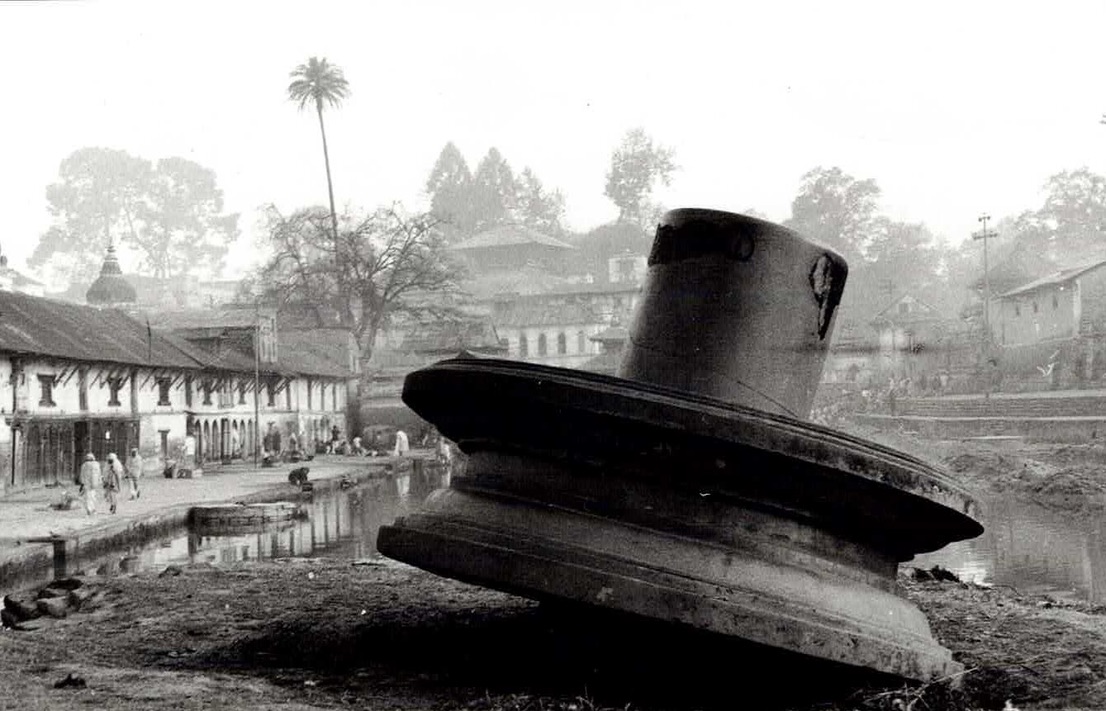Vīrāṭeśvara Mahādeva, Rājarājeśvarī cremation ground, Pashupati
Curated by Axel Michaels

Located within the sacred confines of the Rājarājeśvarī cremation ground near the Bagmati River, an extraordinary śivaliṅga, revered as Viraṭeśvara Mahādeva (DANAM ID: PPK0730), graces the landscape. Locally referred to as Ḍhalkeśvara Mahādeva owing to its northern inclination (Nep. ḍhakalnu, meaning, "to tilt"), this imposing liṅga bears profound historical significance as the largest of its kind in the Paśupatikṣetra, emanating the spiritual essence of the region. Although its precise origin remains concealed within the sands of time, the Himvatkhaṇḍa, a prominent Himalayan text, hints at the presence of a subterranean water reservoir beneath Virāṭeśvara. This mystical aquifer was believed to offer glimpses into the future, a divine bestowment by Lord Brahmā to facilitate spiritual enlightenment. Legends recount the existence of a concealed water chamber beneath the śivaliṅga, where the discernment of King Śaṅkaradeva led to its consecration, veiling its prophetic insights. Another narrative suggests that the decision to obscure the water chamber, which unveiled forthcoming births, prompted the placement of the śivaliṅga. Chronicles disclose that this revered śivaliṅga, also recognized as Āpāṃsajātismaraṇa, emerged to avert potential disruptions arising from the prediction of future occurrences. Virāṭeśvara Mahādeva stands as a modest sentinel of temporal progression, as no significant socio-cultural activities are associated with this liṅga. For further information, explore DANAM.
